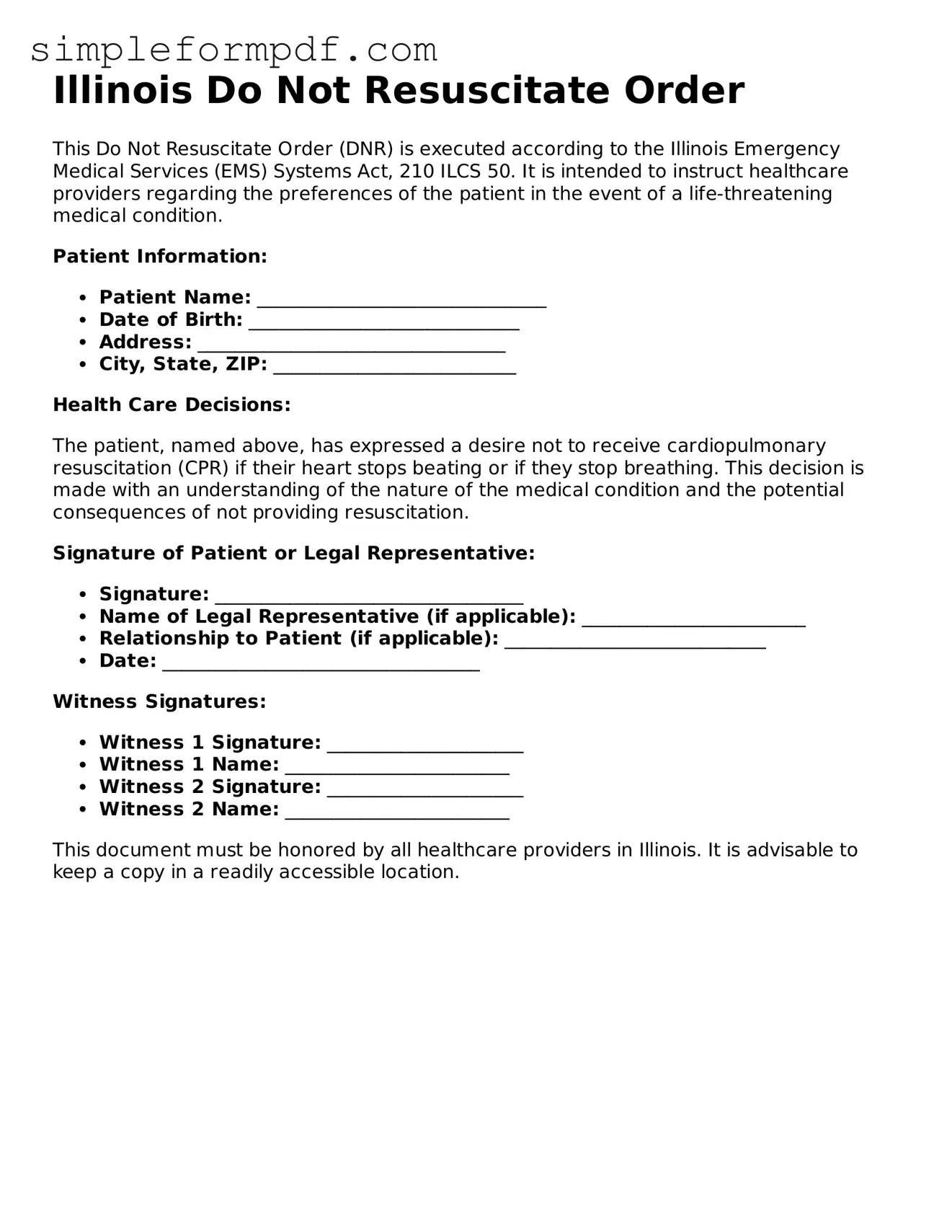Illinois Do Not Resuscitate Order
This Do Not Resuscitate Order (DNR) is executed according to the Illinois Emergency Medical Services (EMS) Systems Act, 210 ILCS 50. It is intended to instruct healthcare providers regarding the preferences of the patient in the event of a life-threatening medical condition.
Patient Information:
- Patient Name: _______________________________
- Date of Birth: _____________________________
- Address: _________________________________
- City, State, ZIP: __________________________
Health Care Decisions:
The patient, named above, has expressed a desire not to receive cardiopulmonary resuscitation (CPR) if their heart stops beating or if they stop breathing. This decision is made with an understanding of the nature of the medical condition and the potential consequences of not providing resuscitation.
Signature of Patient or Legal Representative:
- Signature: _________________________________
- Name of Legal Representative (if applicable): ________________________
- Relationship to Patient (if applicable): ____________________________
- Date: __________________________________
Witness Signatures:
- Witness 1 Signature: _____________________
- Witness 1 Name: ________________________
- Witness 2 Signature: _____________________
- Witness 2 Name: ________________________
This document must be honored by all healthcare providers in Illinois. It is advisable to keep a copy in a readily accessible location.
